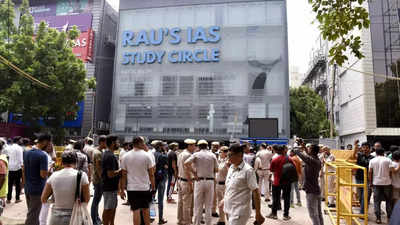
The reshuffle follows earlier instances where large numbers of IAS officers were transferred, with notable changes occurring earlier this year and during Saxena's tenure. In this instance, the transfers were aimed at strategically placing officials in roles that align with their expertise, bolstering the efficiency of key departments. As per government insiders, the move is intended to ensure swift policy implementation and better coordination between Delhi's governing bodies. This comes amidst heightened tensions between the Lt Governor and the Delhi government led by Chief Minister Arvind Kejriwal.
Among the notable officials impacted by this decision are several mid to senior-level IAS officers, including those from the Arunachal Pradesh-Goa-Mizoram and Union Territory (AGMUT) cadre. The AGMUT cadre, which frequently supplies bureaucratic leadership to Delhi, plays a pivotal role in the national capital's governance. Officers like Ashish Madhaorao More, who held key responsibilities in departments related to public welfare, are being reassigned to streamline operations further.
This reshuffle isn't the first during Saxena's leadership. A significant wave of transfers took place a few months ago, with similar actions having been initiated to reform the functioning of various departments. In a reshuffle in May, around 40 senior officers were repositioned, prompting speculation about the Lieutenant Governor’s broader strategy in managing Delhi’s administrative machinery. Saxena has made it clear that he intends to take a hands-on approach to management, which some observers interpret as a way to counter delays in policy execution.
Sources within Delhi's political sphere suggest that this latest transfer is part of a more significant trend aimed at addressing governance gaps and inefficiencies that have been identified within key departments, including urban development, health, and education. Saxena has reportedly sought to place individuals who are more likely to adhere to performance-based assessments and accountability, particularly in departments where progress has been slow.
While the reassignments are seen as a routine exercise by the Lt Governor's office, they have nevertheless raised eyebrows in some quarters, especially given the strained relationship between the Lt Governor's office and the Delhi government. The discord, rooted in long-standing differences regarding the interpretation of administrative powers between the elected government and the central appointees, has intensified in recent months. Chief Minister Arvind Kejriwal's administration has often expressed concerns about what they perceive as the undermining of elected officials' authority by the Lt Governor.
This ongoing power struggle has played out in various arenas, most notably in policy areas such as excise and urban development. The Delhi government has, on several occasions, accused the Lt Governor of interfering in matters that fall under the purview of the elected government. However, the Lt Governor's office maintains that its actions are in line with constitutional mandates and are aimed at ensuring the efficient running of the capital's complex administrative apparatus.
The current reshuffle also follows earlier controversies surrounding high-level suspensions and investigations within the administration. Several officials were suspended earlier this year over alleged irregularities linked to Delhi's Excise Policy, a move that further inflamed tensions between the Lt Governor and the ruling Aam Aadmi Party (AAP) government. It was amid these circumstances that Saxena introduced sweeping changes in key departments, aiming to root out inefficiencies and bring in fresh leadership.
Critics, however, argue that the reshuffle is reflective of the broader tug-of-war between the Delhi government and the Lt Governor’s office, with the transfers being viewed as a tool of control. The AAP government has previously voiced concerns over the influence wielded by the central government through its representative, particularly in matters relating to the appointment and management of bureaucrats. Nonetheless, Saxena’s office maintains that the reshuffle is part of regular administrative processes, designed to ensure that Delhi’s bureaucracy remains effective in its functioning.
